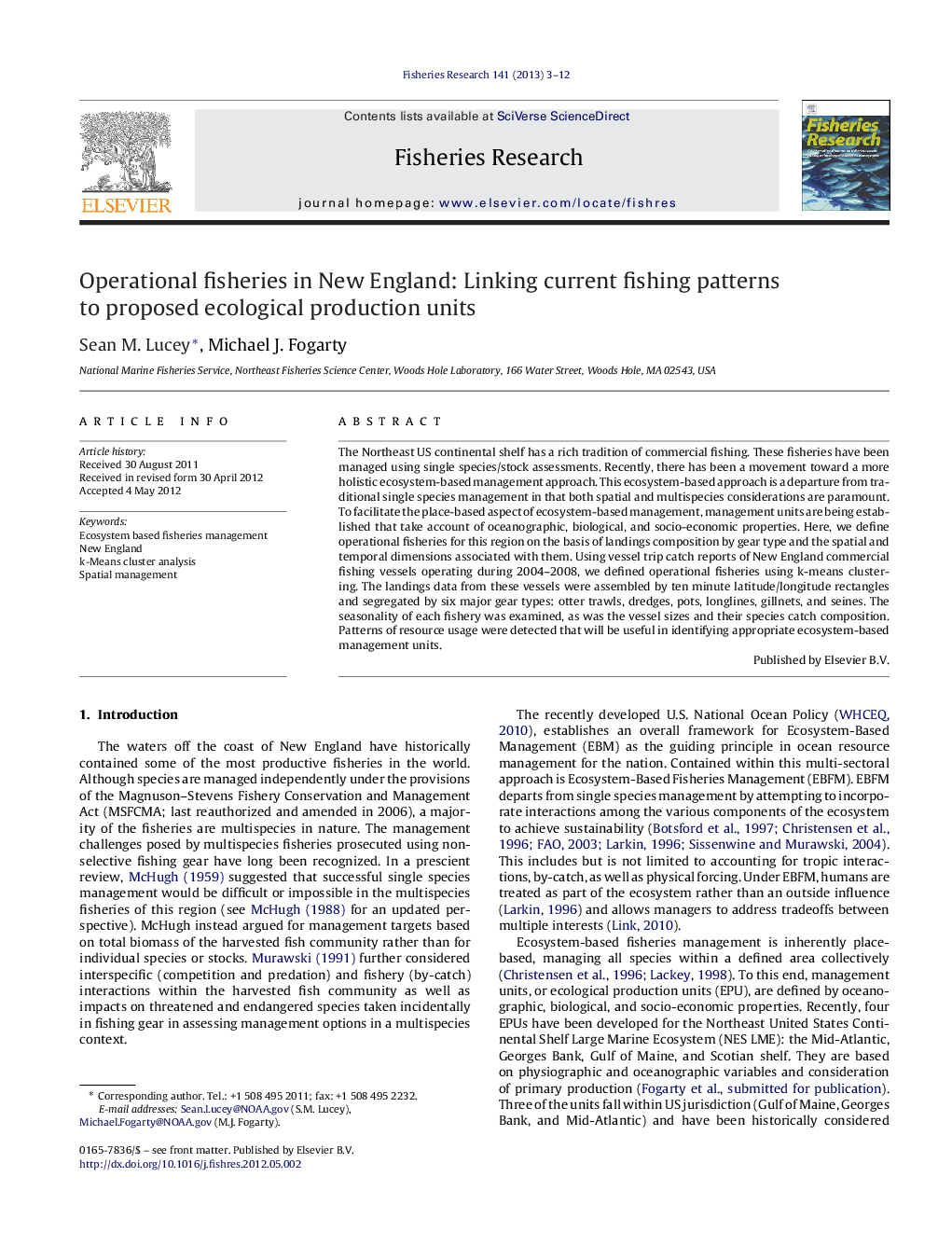| Article ID | Journal | Published Year | Pages | File Type |
|---|---|---|---|---|
| 4543177 | Fisheries Research | 2013 | 10 Pages |
The Northeast US continental shelf has a rich tradition of commercial fishing. These fisheries have been managed using single species/stock assessments. Recently, there has been a movement toward a more holistic ecosystem-based management approach. This ecosystem-based approach is a departure from traditional single species management in that both spatial and multispecies considerations are paramount. To facilitate the place-based aspect of ecosystem-based management, management units are being established that take account of oceanographic, biological, and socio-economic properties. Here, we define operational fisheries for this region on the basis of landings composition by gear type and the spatial and temporal dimensions associated with them. Using vessel trip catch reports of New England commercial fishing vessels operating during 2004–2008, we defined operational fisheries using k-means clustering. The landings data from these vessels were assembled by ten minute latitude/longitude rectangles and segregated by six major gear types: otter trawls, dredges, pots, longlines, gillnets, and seines. The seasonality of each fishery was examined, as was the vessel sizes and their species catch composition. Patterns of resource usage were detected that will be useful in identifying appropriate ecosystem-based management units.
► Operational fisheries were identified by landing composition for 6 major gear types. ► Proposed management units are the appropriate scale for fisheries operating out of New England. ► Potential exists for the simplification of fishery management plans from 9 to 2 in the New England region.
